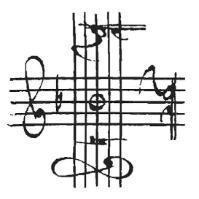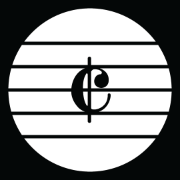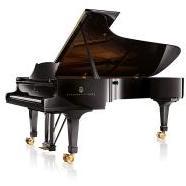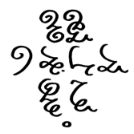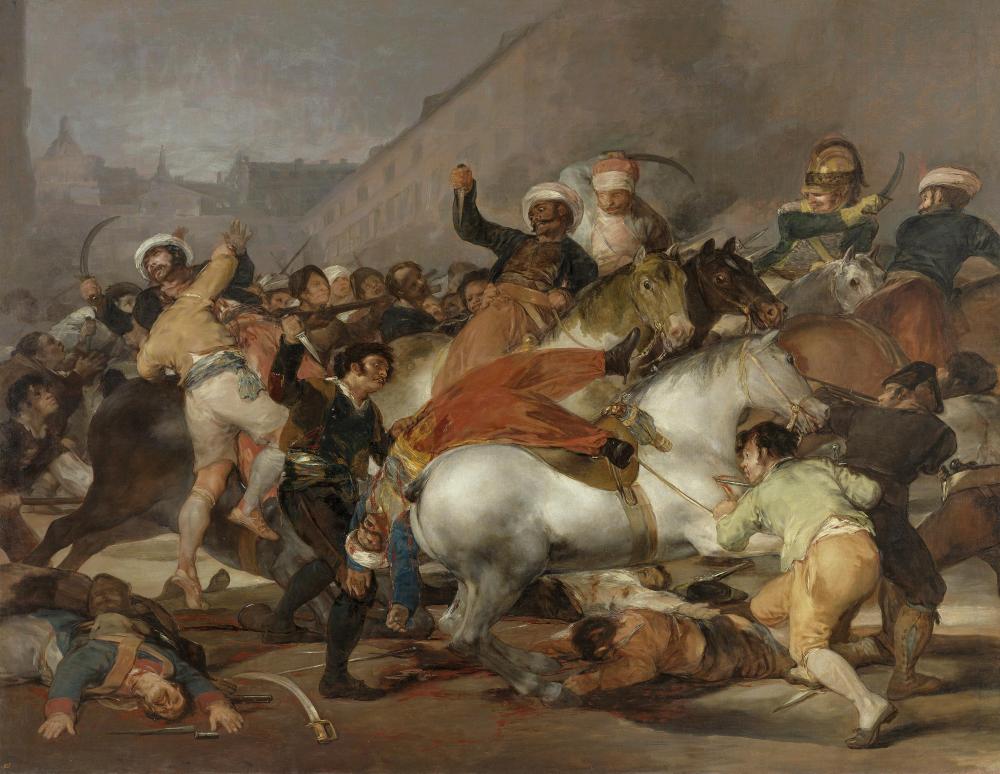Leaderboard
Popular Content
Showing content with the highest reputation since 04/19/2023 in all areas
-
Hi everyone! I'm here to present my most recently finished work, the first movement of my String Sextet in G-flat major. I name this piece a subtitle of Heaven, Earth and Human to express my view on their relationship. (What a self bragging guy this is...) The piece is dedicated to my friend Johnson Ho. Guys and gals, please help me pray for his declining health and wish him all the best. He is definitely one of the reason why I start this piece and the reason why I finish this piece. Special thanks to @Thatguy v2.0 with his always original ideas which sparked my inspirations and new thoughts. Every time after discussion he always gives me new ideas on my composition and musical idea. And he's the one who make this audio perfect in my opinion. Thx so much and I'm so happy I get to know you in this forum and become friends with you as my musical guidance. I will post the mp3, pdf and YT video here first since I'm going to brag all those details after it haha🤣: Final First Draft of First Movement of String Sextet.pdf Final final first draft 01-06-2023 First Movement of String Sextet in G flat major.mp3 https://youtu.be/cI8MAn2XEPk If you don't want to read them, just ignore them!! (spoiler alert)😀😃😄😁😆😂🤣🥰😍🤩😘🤑😵🤢🤮🥶😨😱😭(spoiler alert) (spoiler alert) 😀😃😄😁😆😂🤣🥰😍🤩😘🤑😵🤢🤮🥶😨😱😭 (spoiler alert) (spoiler alert) 😀😃😄😁😆😂🤣🥰😍🤩😘🤑😵🤢🤮🥶😨😱😭 (spoiler alert) (spoiler alert) 😀😃😄😁😆😂🤣🥰😍🤩😘🤑😵🤢🤮🥶😨😱😭 (spoiler alert) (spoiler alert) 😀😃😄😁😆😂🤣🥰😍🤩😘🤑😵🤢🤮🥶😨😱😭 (spoiler alert) This piece is inspired by the thoughts of the great New-Confucian Chinese philosopher, Tang Chun-i. I immerse much in his philosophy and am always delighted reading his huge books. This work is particularly inspired by his thoughts of 9 states of mind, and I really hope I can depict what I feel towards the ninth state, the state of Heavenly(天) Morality Transcending (sorry for my bad English Translation... but this is way too technical for my standard....), his philosophy and Chinese thoughts in general. I choose G-flat major as the tonic since 1)the initial inspiration comes in this key, 2)it's the key of transcendence for me, 3) I want the sound less bright by get rid of those open strings notes, since truth for me is Aletheia in Heideggerian sense, which is hidden but to be disclosed only, rather than a bright thing to have. I know there are some discussions concerning key choice of strings recently, so I'm clarifying here. I had my initial thoughts for this piece in 2021 May when I woke up midnight, but then I was busying with my composing of Clarinet Quintet in C minor and thus ignored it. I wished to continue it in 2022 August after finishing my Quintet, but find it real hard to continue since I don't have the craft to do it. Until I joined YC and saw the following two posts: (Hey Jean @Jean Szulc I said I would learn something from your piece, and this is the product!!!!🤘🤘🔥🔥 Thank you! Will you post here again?) (Yo Vince my bro!!!🤘🤘 Thank you!) These two are absolutely great pieces (go check for them! Vince's piece is still on the "Our Picks" section) and they use the quartal harmony so well. I also learn from Jean's piece on the more extended techniques for strings. Then I had some ideas to finish the piece. This one gonna be something Chinese which is weird in a sense that despite being a Chinese I never write something Chinese. It's always Beethovanian and I really would like to reduce that element in my new piece. After writing the Clarinet Quintet in C minor, especially after having complete an all-controlling piece (esp. the 4th movement), I realized that I have too much reliance on forms and motives and I hope I can make them less explicit in my new piece. I love sonata form very much, but you cannot compose every pieces in it. And for me all the hard work pays off. For the instrumentation is two violins, two violas and two cellos. I love how the addition of 1 extra viola and cello (to a standard String Quartet) thickens the voice and strengthen the middle and low registers. It also gives more chance for viola and cello to sing while having their partners doing the accompaniment. For me the violins stand for the Heaven, violas stand for human and cellos stand for earth, though this is not mandatory interpretation of the piece as it's not always strict imagery. The structure of this piece is more a 3 part one. I have added some rehearsal marks on it to indicate the parts, and I will describe below with some (hopefully) interesting thoughts: (Timepin according to the video) First Section: 00:06 A, main theme. The accompanying texture comes from the first movement of Brahms's String Quintet no.2, one of my favourite of his piece. It starts with viola to emphasize the human call for me. Notice the theme in viola II in 00:23. That theme will appear throughout the whole movement. (Is this a Qi(氣) theme?)00:31 another important theme. 00:38. I like this theme for its contemplative nature. The theme comes from my Clarinet Quintet in C minor. Can you find it? I find it two days before in a wonder LoL. 00:54 B, continuation in high register with added voice. 01:24 C, transition, old theme disguised as a new one. 01:54 D, in D flat major/Mixolydian. The "Heaven" section in my original planning. 02:36 E, continuation in G flat major. 02:59 F, I love the conclusion in 03:13 very much. Modulate to C major to next section in 03:42 and I love the transition so much since it's real hard to compose. 03:42 G, the "Earth" section in my original planning, with cellos taking the lead 04:12 H, repeating the earth section in G-flat major 04:35 I, closing of first part, one of my favourite portion of the movement. I especially love that A-flat major outburst in 04:46. It's magical and I have no idea where does it come from as I only realize it's composed after I finish it. I always imagine Leonard Bernstein conducting this part, LoL. Very synchorinzed here, but it's denied and turn to minor (which will be further developed in the 2nd movement) Second Section: 05:21 J, the minor section. I believe this is the worst part of the movement but Vince's audio saves it. It appears a bit anguished here. The new theme in 05:28 is the basis of both section II and III. Some sort of fugato and imitations happen here though it's not time for it. 06:47 K. I love this part!! Very fluent in violins, and I like 07:06. It's a diminution of the theme of the previous part. I use sul ponticello here to make the sound more silvery. 07:29 L. Trying to reach back to opening section by quoting the first three notes of the theme. But it's external only since it's in F sharp major. Maybe the key difference is only visual and I may change it to G flat major. Also I don't know whether the harmonics work for the violins. I like this section though. 08:24 M. A pizzicato section further developing what's doing in part L. Daniel @Omicronrg9 must have inspire me for this part. I like the contemplativo section in 08:56 too with some call and response between the two violas (humans) 09:34 N. Transition to section III. I freakingly love this part! The transition for me is smooth, and it's transforming the minor theme of section II to a major/pentatonic one. Third Section. 10:05 O. Introduction of the fugue subject. 10:20 is the start of a triple fugue, with the subject in Violin the main one for me. 10:52 theme from 00:38 quoted. Subject through G flat, Eb minor, G flat. 11:10 P. First longer episodes, theme from part F quoted Subject through D flat. I love the preparation for the first climax of the fugue in 11:41. I love the climax in 11:48! Subject in G flat. 12:03 Q. Another episode to direct to C flat major. Themes in part D and the theme in 00:31 quoted. Subject in C flat and A flat minor 12:42 R. The great Con spirito! One of my favourite portion of the movement, The A-flat major is chosen to echo in climax of section I in part I. Final appearance of the subject of the fugue in climactic G-flat major, and leads directly to the coda. In 13:17 I have a moment when the first cello is higher than the violins to correspond with a Chinese philosophical concept in the book of Change, when the power of earth is up and the power of heaven is underneath, it's auspicious since the heaven and earth are communicating instead of isolating themselves. The Chinese words 乾下坤上 is written in the score though lest you know Chinese haha! 13:28 S. Coda, with a decreasing of tempo. I am initially perplexed whether to write like this, since my little Wind Quintet piece has kind of same treatment in its coda. But I just decided to write like this since it's beautiful and the two pieces are interconnected anyway. I want this passage to be like human successfully synchronize with the heaven and earth. It's quite similar to a Chinese opera here in my opinion. I freakingly love that half cadence in 14:03!! The coda ultima in 14:08 is written much earlier, in Nov 5th 2022. I know the conclusion but find the ways to it very difficult. But I'm happy I am able to achieve this ending!! This plan to be a 2-movement work, but I'm not gonna compose the 2nd movement until I'm ready. It will be very different from this movement though. It's such a long post LoL. Feel free to criticize or critique it if you have anything you don't like about it, or compliment it if you want! I don't mind any comments and I will love to have all of them whether they are long or short, good or bad, positive or negative! Thanks for listening! If you happen to read through this LONG post, thanks so much for it!!!!! I have too many things to tell LoL. Love y'all!! Update: The second part of the second movement of this Sextet is posted on Jan 2024: Kind Regards, Henry8 points
-
The competition is now closed to further entries! Starting Sunday June 18th, 2023 and running until Sunday, August 13th , 2023 Young Composers Forum invites you to participate in yet another new and unique music composition competition hosted by @Thatguy v2.0, @PeterthePapercomPoser, @Henry Ng Tsz Kiu, @Omicronrg9, and @chopin, all of whom will also judge the competition. Dreams pervade our lives in a myriad of ways. Symbolic dreams, prophetic dreams, anxiety dreams, and lucid dreams are just some among our repertoire of night-time excursions. In this competition, the oneironauts (dream explorers) are tasked with writing a piece (or song) for one monophonic instrument (or voice) and one polyphonic instrument, based around the idea of dreaming, a specific type of dream, a particular dream that the oneironaut wants to share in their music, or depicting a famous dream story or poem such as Edgar Allan Poe's "A Dream Within a Dream". The way in which each oneironaut chooses to do this is totally up to their particular taste and interpretation, the only strict guideline being the instrumentation. The monophonic instruments (or voice) which are allowed include even string instruments which can play multiple notes at once, but do not customarily do so all the time (such as the Violin, Viola, Cello or Contrabass). And possible polyphonic instruments include but are not limited to: Piano, Harp, Guitar, Accordion, Organ, Harpsichord, and etc. Edit: Midi keyboard synthesizers are allowed as long as the part can be performed by a human being. Delay effects are also allowed, although looping pedals are not as they would defeat the purpose of writing for one instrument. The submissions will be judged on a scale of 0 - 10 in the following 8 categories: The scoring categories are pretty self-explanatory. The Taste category is for the judges to score how much they personally enjoyed any given composition, while the other categories are expected to be scored more objectively. The oneironauts names will not be revealed to the judges until the judging is complete. The prizes will consist of $100 1st prize, $50 2nd prize and $25 3rd prize regardless of the number of participants. Also, if there will be any popular voting polls they will not include 1st, 2nd and 3rd place picks as the judges have determined that this portion of the competition may have been a bit redundant in the past. In order to compete: Your composition must not exceed 15 minutes of music and must be at least 3 minutes long If you are a new member, please submit an unrelated original piece of music to the forum to qualify (create a new topic) Your composition must be somehow based on dreams Instrumentation must be for only 1 monophonic instrument (or voice) and only 1 polyphonic instrument No age limit One submission per participant Mp3 submission and score/sheet music pdf required including a description $100 1st prize, $50 2nd prize, $25 3rd prize Deadline: Sunday, August 13th, 2023 Submissions are to be sent to @PeterthePapercomPoser through direct message with the title of the composition as the subject line. He will post the submissions anonymously in a special contest thread for everyone to listen to and consider. Besides attaching a pdf score (without your name in it) and mp3 rendition of your music you must also include a description of your piece for the judges, fellow competitors and young composers at large to better understand your music. How did you incorporate the idea of dreaming into your music? Feel free to include the description of the dream, dream story or dream poem that you used. To view the submissions thread go here: To view the results and winners thread go here: To take the "Dreamscapes" Satisfaction Survey go here: To vote in the popular voting polls go here: Current Entrants: (reply to this thread in order to enter) @expert21 @Bacon Danger @ComposaBoi @Left Unexplained @IanBoins @veps @Samuel1 @AlexeySavelyev @PCC @GreenGiantCanOfCorn @Michalis @44W74l4 @SorooshMHS @jojojo @popsinn @Beethoven is God @Jordan Jinosko @Camfrtt @AngelCityOutlaw @MusicianXX12 @bkho @ComposedBySam @Samuel_vangogh @NicholasG @Minerscale @José de Azevedo Souza @Composer from Europe @spike473 @Paweł Siek @Sergio Moreno @Irene Huang @MTK8 points
-
This is intended to be the second part of the second movement of my String Sextet in G flat major, after the part of Lamentoso. These two parts are very different from the more fleeing and transcendental first movement as I hope they capture the sadness of the time and what I feel, before leaping back to the world of the pentatonics later, which would make the pentatonics more grounded. Here is the first movement of the piece: Here are the scores, the original version and a version with my own (painful) analysis on it: Final Fugue from String Sextet movement 2.pdf(With Analysis) Final Fugue from String Sextet movement 2.pdf And here is the youtube video: The piece is dedicated to Mr. Johnson Ho. The finishing of the fugue is prompted by hearing his worsening health, so I really want him to stay healthy. The inspiration of the fugue first comes from my friend Mike @chopin and my mentor David (I am very honoured to name him my mentor even though we have never met in real life since his videos form the skeleton of my composing skill. Go watch his analysis videos NOW!) said that the middle fugato section from the first movement is the best part of the movement. I was shocked since I believed it was the worst of the movement! Then my bro Vince @Thatguy v2.0 (who also makes this perfect audio) inspired me to write a dense fugue for the second movement, and so I challenged myself to write a six part fugue, since I feel like it’s not fully realised in the first movement. This is he most difficult I have ever written, but finishing it I now consider it my most beautiful work composed up to date. It’s so emotionally deep, even weirdly I feel zero emotion during the composition process, only calculating the counterpoint haha. I am so satisfied with the result. The fugue comprises of three subjects, all from the 1st movement. The 1st and 2nd subjects are from the 1st movement fugue’s subject, while the 3rd subject is derived from the opening theme of the Sextet’s first movement. Here is the plan of the movement (time according to youtube video): First part (00:03): First subject enters in each instruments, inversion introduced at . All of sudden C minor enters (01:55) and I quote my subject of the C minor Clarinet Quintet 3rd movement fugue here to intensify the sadness. Also kind of replying to the relationship of G flat major and C major in the first movement, but while freedom is shared there, now sadness is shared. Second Part (02:12): Second subject enters and the section features a saturation of stretti. The C minor section (03:56) comes in at and it’s my favourite section of the whole fugue. It’s insanely tragically beautiful here. Third Part: Third subject enters (04:58), first and second subjects combine in the manner of the 1st movement fugato. The intensity is kind of lowered after that insanely tragic C minor section, maybe kind of accepting and reflecting upon it, and it’s less saturated with the subjects. However things starting to get intensified, first the third subject is treated as in Bach’s Chorale Preludes when it is cut up and divided to four phrases alongside the other two subjects (06:29). The only pentatonic entry (07:16) arrives to kind of relate itself to the first movement and hints what will come at the end, but at the meantime it’s defeated by disappointment and the fugue ends in a doubtful manner, which will lead to the chant section. Hopefully I would finish the whole movement as soon as possible! Hope you enjoy the fugue now! Henry7 points
-
This might actually be my best current composition. It is my weirdest piano piece for sure. I built the harmonies and "melodies" from a chromatic superset (3+4+5). I can explain it better if I see interest. It took me around 5 hours to compose this piece and I have to say that it is a true nightmare to learn it and play it without many mistakes. I pray for the people who decide to start learning it hahaha. Some of the jumps are actually scary. The piece has an improvisatory nature like some of my other compositions, but this time it is easier to imagine a horror plot behind it. Also I think there is no official performance version of the work, you can play it very different to the way I played it today. Here you have a performance a friend of mine recorded: I hope you enjoyed it! Let me know if you have any doubt or advice.7 points
-
I've been listening to a lot of your music this week and last to help me with my videos. Here are some of the compositions I've listened to. These pieces were either used in my latest videos or I was highly considering making use of them (all opt in): REGENERATION by @Jordan Jinosko A beautiful symphonic work that made its debut in my explainer video Caprice in Seven by @Mikebat321 Very fun piece, made it in my explainer video Aria Of Shadows by @Nikolaos Dimopoulos Great adventurous piece here, the mood just didn't quite fit what I was looking for in my latest video. But a strong contender for future videos for sure. Desert Temple and Sky Temple by @Zeldz Give these a listen! They are superb. Sky Temple made its debut in my latest video actually. And Desert Temple has so many applications for future use in a video. String Sextet in G Flat Major by @Henry Ng Tsz Kiu Gotta love Henry's Sextet! A complex piece, but there are so many goodies here, was used in an explainer video Acciaccatura Study for Violin and Piano by @Carl Koh Wei Hao This one made its debut in my latest video about Chopin, since I talk about acciaccaturas! Mathieu's Submission (For a Ryal Leach Competition) @Mathieu This one is really good if I ever need some type of "suspense" theme!....I am a fan of the Horror genre, and I have added some horror elements in my latest videos. Caprice for solo violin no 3 and 1 and 2 (linked in 3) by @luderart The style can work very well when you only want one voice to convey a certain mood. I've also listened to parts of Chopin's Fantasie Impromptu and Piano Concerto 2.7 points
-
Greetings. It has been a while since I posted something on this forum. I didn't get to review compositions by other members lately due to being busy with my studies, and I'm sorry for that. Anyway, a few weeks ago, I decided to write a theme and variations for the piano. This was my first time writing music with this structure, but it was not because I lacked inspiration. I took it as an exercise to boost my creativity and improve my composition skills. This eight-minute-long piano piece, written in E-flat major, is one of my major works. It consists of a theme, five variations, and a short finale. These variations are based on a simple theme I created, which I finished within a few hours. On average, each section took me a day to complete. One difficulty I faced when writing this composition was to keep the material interesting while not being too distant from the theme. Here is the breakdown of the structure of this composition: Main theme (E-flat major, Maestoso, 6/8): It's an operatic yet simple theme, which opens forte and Maestoso. 1st variation (E-flat major, 6/8): This variation is a berceuse with grace-note embellishments in the melody and frequent hand-crossing. 2nd variation (E-flat major, Più mosso, 6/8): This playful variation features sixteenth-note figurations in the right-hand part. 3rd variation (A-flat major, Sostenuto, 6/8): This variation is a serenade and the slowest among the five variations. This variation ends with a long pause, marking the beginning of the fast section towards the finale. 4th variation (E-flat major, Vivace, 6/8): This variation is partly inspired by the third movement of Beethoven's fifth piano concerto. This fast section demands virtuosity and contains a short cadenza passage. 5th variation (E-flat major, 2/4): This variation is an étude featuring rapid triplets in the right-hand part. This section is the shortest among all variations, lasting under a minute. Finale (E-flat major, Presto, 6/8): The finale opens with tremolos and a horn-like passage restating the main theme, followed by a reprise of the fourth variation at a much quicker tempo, quickly concluding the piece. Let me know what you think about this piece. I hope you'll enjoy it! Carl Koh Wei Hao P.S. The audio was generated on MuseScore 2.3.2.6 points
-
Welp, the end has come. The season finale is here. Now I can write for guitar again. I used a lot of forms and styles for this set of pieces, and decided to write a love song type of thing to end it. This was inspired by Beethoven's "Ode to Joy" theme, as well as Pink Floyd's David Gilmour. Lot's of lovey dovey pentatonics in this. Hope you enjoy, and thanks so much to those who have been following along with the progress! You guys are awesome, and when I make final edits, I'll be sure to take everyone's comments and advice into consideration.6 points
-
Hello! Earlier this year I had the pleasure of organizing, hosting and judging the "From Bits to Bangers" Instrumental Music Composition Competition, and now I've finally had time to write a piece using the requirements of the contest as inspiration! I've chosen an 8-bit track that nobody else used - Harvest Moon - "Mountains" which I've also attached here for your listening pleasure. I didn't write this in my regular method, by first finishing everything on paper before even allowing myself to input anything into the computer. I think the very repetitive nature of the original track was a challenge for me to make something interesting out of and I coped with that by entering the music piecemeal into Musescore. Let me know if you like the result or not. I welcome your constructive critiques, suggestions and observations! Thanks for listening.6 points
-
Greetings. I want to present a piano composition I finished recently. This short étude, written in C-sharp minor, is a toccata-like "show-off" piece designed to allow the performer to display his playing skills. This étude also emphasizes the agility of the weaker fingers of the right hand. I was in a state without inspiration when writing this piece, so most parts of the composition were notated spontaneously. Also, I implemented Mike's techniques in enhancing playback realism, so the playback should reflect my interpretation of this piece. Any feedback is appreciated, and I hope you enjoy this piece! Carl Koh Wei Hao6 points
-
6 points
-
Hi guys, here's a wrote song I composed and recorded. Would enjoy hearing your thoughts. Thank you!5 points
-
Hi again, I had the thought that I wanted to do some smaller stand-alone pieces that would require less stamina for people to play and that were short enough that I could do the calligraphy aspect without a significant time investment (I don't use stencils or anything)....the thought kind of arose out of doing the piece for Mike's slur video which was along those lines. Here they are with the scores in the video, and the newer one is on flemish virginal instead of clavichord which is cool. They're not a set but they're both small so I figured might as well put it in the same post. It would be awesome if someone out there decided they wanted to play stuff like these, since I made them so they wouldn't be such a huge undertaking but would still give people the vibe they're looking for with the late Renaissance.5 points
-
This is a piano sonata I've been working on. It's sort of a venting piece for me. I write it while dealing with the thoughts of being a gay man in a conservative Christian community, so I think it's applicable for Saint Valentine's Day, but instead of "I love you," it's more, "I wish I could love you (without being abandoned or shunned by everyone I know)." Kind of melodramatic, I know, but I'm pretty happy with it so far. I plan on making 2 more movements. Forgive my mistakes in the piano recording, (especially measures 246-7. Yikes, I butchered that)!5 points
-
Put on your ugly Christmas sweaters and DANCE, cuz I've got a treat for you! This is a piece that I started over a decade ago (the main theme, first variation and rondo were begun then) but have begun working on again since October 1st. This is by far my longest piece thus far, clocking in at just over 15 minutes. I tried to capture the joy and spirit of Christmas in these variations. I aimed to vary the types of different textures and ideas and keys present, sometimes having the orchestra or sections play with and without piano. There is some virtuosity and fireworks in the piano part which at times is a bit showy. Structure wise, I tried to make each variation smoothly connect to the next and to visit many distant keys throughout (mostly by going through almost all keys actually through rapid cycling through the circle of fifths). I also had quite a bit of trouble making the piano part and orchestra line up as for some reason, in Musescore (since I was using Musesounds for the orchestra and MS Basic soundfont for the Piano) the Piano eventually started falling behind the orchestra and I had to import separate files of just the Piano and just the Orchestra into Reaper where I could realign them if they started phasing. I hope you enjoy the fruit of my labors this Christmas! Any comments, critiques, or suggestions are welcome! Here is the form of my piece with timestamps: 0:00 - Theme 0:38 - I 1:14 - II 1:39 - III 2:12 - IV - "Transcendental" 2:36 - V - "Stately" 3:03 - VI 3:32 - VII - "Sneaky" 3:56 - VIII - "Flourishes" 4:30 - IX 5:06 - X 5:37 - XI 5:55 - XII - "Romance" 6:26 - XIII - "Romance Decima" 6:58 - XIV - "Minuet" 7:22 - XV - "Minuet Decima" 7:45 - XVI 8:16 - XVII - "Siciliana" 8:55 - XVIII - "Siciliana + Silent Night" 9:30 - XIX - "Waltz" 10:07 - XX - "Scherzo" 10:49 - XXI - "March" 11:31 - XXII 11:53 - XXIII - "March + Jingle Bells" 12:31 - XXIV - Cadenza 13:14 - XXV - "Rondo" 14:42 - XXVI - "Lilt" Edit: I've reuploaded a new mp3 processed with @AngelCityOutlaw's suggestions to get rid of clipping. Let me know if it sounds better now!5 points
-
This is the title song from my musical by the same name, the second half of the video explains the context of the song. The song is meant to be a fifth lower, accompanied by string orchestra, and sung by a tenor. I'd appreciate feedback both on the video and the music- not the performance, I'm a professional violinist, not a singer! Cash5 points
-
Well, the nights are getting longer, the frosts are appearing on the ground, @PeterthePapercomPoser and @Thatguy v2.0 are locked in battle... It can only mean one thing - it's long overdue time for the annual Young Composers Christmas Music Event! The Brief Same as last year - write anything you like inspired by a winter celebration of your choice! Or, if you don't celebrate anything, maybe a piece to capture gazing over miles of snow (or grass if you live in the Southern Hemisphere) ... If you want to participate, pop a comment below! You could have a look at last year's competition for inspiration if you like: It would be great to see lots of you taking part! No prizes, no winners, just a way to get the creative juices flowing during the Season. Submissions will open on the 1st December. There will be a separate submissions thread, so look out for that! There's no time limit but you'll probably want to have your piece done by Christmas, or at least the end of December. Excited to see what you come up with!5 points
-
This is a really old piece that I dug out of my archives and decided to finish. It is an exercise in how to turn a really banal and repetitive melody into (hopefully) something more interesting through polytonal harmonization. Also, there's lots of cross-relations but I tried to keep them tasteful. I decided to keep some traditional cadences intact despite the polytonal context. Needless to say, this is a bit rough around the edges and might qualify as more of an experimental orchestral sketch than an actual piece LoL. Let me know if you like it or not. I welcome your critiques, suggestions or just observations. Thanks for listening!5 points
-
Thanks to @PeterthePapercomPoser and @luderart for the ideas in this. It was my first dabble at using the mystic chord and a #4b7 mode, as well as trying out a short undeveloped form. I like the result, and hope you do to.5 points
-
Heyo new work just dropped. I've put everything surrounding this piece into the pdf score, or you can just read it in the video description. Which btw, I've finally made my first score scrolling (there's not even scrolling its just a slide show) video! This score took me ages to polish and I'm so happy of how it looked! I know it's not the most interesting work texturally, but thematically I think it's fine. And since this work borrowed themes from somewhere else, I've decided to link the original music down below so you can check out the original music and listen to what I've borrowed, I guess. Enjoy! https://www.youtube.com/watch?v=SPa8bPqQfmo https://www.youtube.com/watch?v=z34enKCqRGk https://www.youtube.com/watch?v=t5vG4Be1Ci85 points
-
Hello everyone, This is my first post here and I wanted to share a piece I recently wrote with you all. Let me know your thoughts! The five poems within my composition Poetry collectively narrate a heartbreakingly beautiful, vastly complex, and motivically interwoven tale. The suite opens with the Prelude (0:02), a fantasy-like prophecy of the other poems in the suite; the bells of reality can be heard in the distance. Dreamy visions pass transiently through the background noise, and as the piece progresses, the bells increase in intensity to prevent the visions from fully materializing. The bells soon find themselves trapped in a climactic whirlwind as they start to transcend time and space, like accelerating into a wormhole, falling faster and faster and faster... In the Lament (4:34), one finds oneself in a completely new world - one that is bare and empty. The offbeat rhythms insinuate a notion of regret, and the unresolved pedal point during the climax leaves the listener yearning for closure, although there is none to find. This poem ends with a painful lullaby-like restatement of the opening theme, as if crying oneself to sleep. During the night, the Nocturne (8:12) slowly brings the once-barren world to life. After a plainly stated opening theme, the progressive harmonies start to bring wonder and color to the world, while the stars twinkle in the distance. As the sun rises, its rays illuminate the colors of the landscape, which mix to create a brilliant backdrop of green mountains, purple flowers, and a golden sky. The Scherzo (12:07) is an idyllic depiction of the utopia the world has now become. There is joy to find in life! Jokes to laugh at! Authentic cadences, for the first time! The tender, warm feeling of being loved! Moments of pure brilliance and ecstasy! Excitement! What is there not to live for? It's everything one could ever want in... Postlude (18:46): a snap back to the bells of reality.5 points
-
Hi everyone, Here is the final movement of my Piano concerto in C minor. I began composing it in the first lockdown of 2020 (!), and finally managed to end this (time-consuming) work. The final movement is a rondo. I will surely write the plan of the movement in the next hours even though it is quite clear. I use the main theme of the concerto in this movement (the one of the first movement). If you want to be familiar again with the other movements of this concerto, here are the links: Finally, here are the PDF and audio of the 3rd movement:5 points
-
5 points
-
It's that time again. I may have gotten weird with the score.5 points
-
Helloo! I finished a ballroom waltz suite titled Roses, Carnations and Daisies inspired by the very first bouquet I gave to my current girlfriend, and her first bouquet ever given to her. The very first and main waltz represents the Bouquet, waltz 2 is titled "The roses", waltz 3 is "The carnations", and waltz 4 is titled "Daisies". Last time I posted here I got feedback to include a section in a minor key to add even more variation. And that is what I did 😄. This is the piano version even though my waltzes are meant for orchestra. I will orchestrate it as soon as I can and share it with you guys. I am open to any feedback and suggestions 😄 Thank you so much!! Bouquet waltz.mp35 points
-
Yet another improv, i worry im boring people with these! I'll stop doing it soon, I.promise! I've started writing down my compositions/improvs again. I have a couple of minuets I'll upload soon, I just get so distracted when I sit at the piano. I've composed, via improv, a piano sonata in C major, I was thinking of the third movement when I improvised this. It reminds me of Haydn, I want the third movement to be light hearted and playful because the second movement I composed is in c minor and I use every trick up my sleeve to pull on the heart strings. I wish I recorded myself playing it, I worry my memory of it could get corrupted because it has more complex counterpoint. The first movement is like a piano concerto and is full of flashy runs in both hands. It has a Mozartian air and I use some of his signature moves but it has enough of me in it so it's not a cringey pastiche. Well I hope not! The improv here is a 'first run' so it's full of hesitation and mistakes but it made me smile when I listened back to it so I thought I'd upload it, I've been quiet for a few days so why not. Cuckoo!5 points
-
Following suit after my latest video's warm reception by my dear audience, I have decided to continue composing vocal works and rendering them through means of the choral rendering website Cantāmus. Interestingly enough (mostly given the fact that I am not that devout myself), religious texts appear to be among my best options when it comes to this kind of contrapunctal vocal works in Latin (though this need not necessarily always be the case, for more secular lyrics might as well be included on one of these compositions of mine later in the future). Enjoy! YouTube video link:4 points
-
Hi guys! All of us here are composers, whatever level we are in. However everything has its beginning (and hopefully not end). We all have our first experience of composing, and start to compose more by having that first experience as the basis and build ourself up, whether by skills, knowledge, experience or taste. I would like to ask, why and when do you first begin composing? What is your inspiration of it? How do you compose when you may not have adequate tool and theory to back you up? I wanna share my own experience. I started learning piano when I was 10 years old, a relatively late age. Then after months or a year or so, I suddenly had the impulse to imitate Beethoven's Moonlight Sonata, since it was the first classical piece I had ever listened to, alongside his no.13 and noi.15 Piano Sonata. I remembered I knew nothing on composing and therefore just wrote some mess out, which might resonate with some of Beethoven's passage LoL, in a naive way. I didn't even have staff paper at that time, let alone PC and computer program to write the music out. I just wrote with the letter names on top and the note value under it like this: A G# Fx G# Crotchet Crotchet Semibreve Minim (in note, not words) I have already forgotten that piece, but that experience is unforgettable. There's no reason for me to begin composing, since no one has ever taught me so, but I still do that and luckily I am still composing. Really wish you guys can share your first moments of composing to us! Henry4 points
-
Hello everyone, I was really busy the past few weeks so only now I'm able to show you my new project. Estampas_de_España.pdf https://drive.google.com/drive/folders/1xnciHniD_iW3uBUrxphiy_p4QF9xaSEe?usp=drive_link (The same PDF just in case) Basically, I'm organizing a cultural project where composers from all around the globe put piano music to a selection of paintings. The best pieces will be included in a collaborative set that will be performed in the future (up to 16 pieces for the official collaborative album). The best composition will receive a 500 euros prize, the second best work will receive 200 euros prize, I will offer a few 30 euros rewards to other great pieces (up to 3 extra rewards). I hope many people will participate, see you soon! Don't forget to send me your painting choices so I can organize better (to my email ivanmusic1791@gmail.com). Here you have the drive with the paintings: https://drive.google.com/drive/folders/1rR-lpQH18sTy6qRqH2_QcR7DIMd4Z0Y8?usp=drive_link If you have any doubts contact me over email! But I will be able to reply here for a few days, but I might not check it as often.4 points
-
While I work on the slur in Music Jotter, it got myself asking the question, what even is a slur? Is it to create legato notes? If so, why not just use legato markings? Is it to help organize music or melody lines? So this got me thinking, let's have a YouTube challenge going over the various "use cases" for slurs. If you want to enter this challenge, just reply here with the piece you wish to be entered. The score is critical. If you don't have a score, you can't enter. Either submit an existing work (or compose a short example) to help demonstrate an aspect of the musical slur. Keep in mind, the slur has different meanings depending on instrumentation. For example, in strings vs piano, there are slightly different meanings due to how the instruments are played. But as you know with music, music is an art, and I'm sure there are other use cases for the slur. What are they? Upon your submission, point out which phrase you want me to demonstrate by giving me a bar number. Then give me a sentence or two as to "why" you used the musical slur in that section of your music. I will compile these results, and put them into a YouTube video.4 points
-
This is the updated, final version of my Baroque keyboard suite, in the style of Bach. Overture Allemande Courante Air Scherzo and Trio Sarabande Bourrées Gigue Duration: 35:10 For details on the suite as a whole (including its architecture), and of the individual movements, please refer to commentary.pdf.4 points
-
Upon coming across this ascending chromatic motif while improvising on the violin, I wondered just how well it would work as a fugal subject. Having now developed it into another one of my fugues, I thus present here the results. Enjoy! YouTube video link:4 points
-
To be honest I don't think I exaggerated with the title of the video. Composing it has been a turning point for me, very few times I have felt a composer-piece connection like I had when finishing this. I left some kind of metaphorical tale in the description of the video. Let me know any doubts you might have. Also I used some kind of augmented 6th to reach a Neapolitan chord right before the last climax. I hope you enjoy it!4 points
-
Regarding this, I personally don't mind conservative harmonies. I know I said this in one of my videos, but good harmony doesn't necessarily mean, who can create the craziest and most unique harmonies in a piece. I think that crazy harmonies may actually ruin this piece, just given its style. One of my complaints around composers who try to get too creative with their harmonies, is that the overall piece sometimes starts to lose its meaning. In my opinion, use harmony where applicable. In a piece like this, the tamer harmonies are ok in my eyes, simply because the rest of the piece has other elements to give it color. One instance of this is the polyrhythmic section which is one of the most beautiful sections of this sonata. Perhaps the phrase may contain basic harmonies, but the clean harmonic structure makes the phrase easy to follow. And don't forget the melody. Melody is probably one of the hardest aspects of composition, and I do think Henry excelled in that area. Interesting, because I recently listened to nearly all of Beethoven's sonatas, and I find that most of them are not really lyrical. Some exceptions would be Moonlight Sonata, and perhaps Pathetique. But Henry's sonata is perhaps neo-romantic. I found myself enjoying this 1st movement sonata more than a lot of Beethoven's 1st movements. I'll have to give Schubert a listen one of these days.4 points
-
Hi I am Henry. This is the first year I have joined YC. What a fruitful year this is! I am very grateful to have accidentally joined YC and have the chance to see many great composers and works here, which are in different styles, and through reviewing and communicating I think I have made some progress too. Also I get a chance to share my own works here. It’s hard to have fellow musicians to give you advice if it’s not performed in real life. Deepest gratitude to our boss Mike @chopin, since without his persistence (and paying the fee LoL) YC won’t become the oldest forum still existing now. I have basically reviewed most of the pieces in the forum during this year. I have recently cut down some of the reviewing numbers but hopefully will keep on doing this. What I want to do here is to feature some of the pieces that are the most memorable for me. I will do the orchestral music list first and later the chamber and solo keyboard ones. I will only select 1 work from each composer in each category to feature more members with different styles. I am more inclined to longer works since I tend to love longer works more (and I myself compose longer works if not overly long LoL). The pieces included here are those I have reviewed before, so they are not necessarily posted within this year. Pieces that are included here of course do not mean that they are not great pieces, since the pieces here are more to my personal taste. And of course there will be many past great pieces that I have missed here. I will only write down some brief sentences on each of them, as I have already provided my reviews on their respective posts and you may check their wonderful music via the link!! The order is ranked not in terms of how good the pieces are, but what is more memorable to me since they are included chronologically to my brain’s memory to the works. Orchestral 1. @PeterthePapercomPoser's Suite for Strings This one is simply my favourite piece on YC this year, and is undoubtedly my personal no.1 piece. Just listen to the Postlude and I cry every time to it. Sublime in a simple and direct way and you see a beautiful and honest soul here. 2. @gmm's Symphony no.1 mov.1 I am fighting between this one and his suites. If I don’t limit myself to choose only one work from each composer, all of his works will be included here with his masterful orchestration. I choose this one since it’s longer, structurally more complex and chronologically more recent. Hope you will post more frequently! 3. @Thatguy v2.0 's What the Ocean Knows A great depiction of the ocean here with great quartal and unstable harmony, while at the same time shows how powerful the ocean is. Don't blame me for digging your old posts out LoL bro. 4. @Camfrtt's Piano Concerto in C minor I include only the movement three here, since the posts have all 3 movements attached in it. This one is simply a sublime Rachmaninoffian romantic piece which displays great piano virtuosic skills, melodic writing and harmonic progression. Also featured in Mike's video on melodic writing. You are so young and hope you compose more! 5. @Left Unexplained's Odyessey Such an accomplished piece. Again, all of his orchestral pieces deserve spot here, but only limited by my requirement. His pieces are always full of imaginative orchestral colour. Hope you will post more frequently too! 6. @Quinn's Music for Orchestra 14 - (Approx 5 1/2 minutes) Great orchestral colour with klangfarbenmelodie technique used. I choose this one over the Sun one simply because this work is more recent. 7. @Krisp's Lucid REM and Reached Alert It’s hard to choose between this one and the Nightfall Fugitive or the Gravedigger one. They are all in unique dark style with very colourful orchestration and harmonies. I choose this one simply because two pieces are included here so you may enjoy one more piece! 8. @WowBroThatWasReallyEdgy’s The Tortoise and the Hare This is the winning piece of the Tortoise and the Hare competition and you know why. Great descriptive piece to depict the two protagonists. 9.. @Ferrum's Adventure This is the winning piece of the Bits to Bangers Competition. @Ferrum just transforms the 8 bit melody out of nowhere, from banality to sublimity, from ore to score (yup this is one of the name I think that will fit for the competition but banned LoL). All the color change are creative and the materials are all from that 8 bit melody. 10. @Schorninator's Symphony no.8, 4th movement This one is just a beautiful tone poem, even though the form may be less noticeable. I will continue with the selection of the chamber pieces and solo keyboard pieces later. I force myself to 10 pieces here, otherwise I may include much more than this! P.S. Don’t forget to watch Mike’s video for the announcement of the Dreamscapes result!!:4 points
-
Hello people! Late last year I helped organize and host "The Tortoise and the Hare" Young Composers Instrumental Music Composition Competition and now I've finally had the time to write a piece in that theme as well! I've picked Bassoon for representing the Tortoise, Piccolo for the Hare and Solo Violin for the Fox. I didn't intend for this to be a fully exhaustive set of variations on each theme - only to allow me to characterize each personality in the fable to the best of my ability. I've also tried to follow the fable in the form of my piece which goes as follows: 0:23 - A - Enter Tortoise 0:46 - B - Enter Hare 1:04 - C - Hare mocks Tortoise 1:20 - D - Enter Fox 1:36 - E - Tortoise & Hare agree to Race 1:58 - F - The Race Ensues ! 2:09 - G - Hare tires & falls asleep 2:17 - H - Tortoise hurries 2:34 - I - Tortoise passes Hare 2:51 - J - Tortoise tires 3:02 - K - Fox spots Tortoise 3:13 - L - Hare awakes and hurries 3:30 - M - Tortoise wins! Let me know what you think! I welcome your critiques, suggestions and observations!4 points
-
obvi this was written a long time ago also not completed, but, I haven't uploaded in a long time, so, henceforth, upload 4 yall.4 points
-
Hello everyone, I haven't posted in a while haha. I plan on composing more pieces, even if they aren't super huge projects, like the one I'm showing today. I composed this after I had a really bad argument with a family member and I used it to vent pretty much. While I composed the piece I also created a little eerie story in my head, although you can either ignore it and let free your imagination or use it as some small guidance. I actually don't know how I composed this piece, it all started when I found how the notes D, Ab and G made a really cool dissonance, then I tried to add context to it and modify it in a progressive way. As the piece evolved I recycled some ideas and motifs, so because it is so short even though I composed it in an improvisation style it ended up being kinda solid formally. So I'm quite happy with the ration between music quality and the ammount of hours it took me. I hope you enjoy it! Let me know your thoughts.4 points
-
Next I will have the chamber pieces here: 1. @Thatguy v2.0's Verdant Dawn This piece is so vivid at depicting the dawn, and it serves as the main inspiration of my own Wind Quintet. The quartal harmony also inspires my own String Sextet. 2. @Jean Szulc's String Octet This piece is just a powerful display of rhythmic power. The quartal harmony and idiomatic strings writing are amazing too! Another inspiration for my own String Sextet. 3. @Sean Brown's Romance in D major for violin and piano This is such a virtuosic showpiece. I don't see any piece as vituosic as this one and Sean plays the violin part himself!!! 4. @Krisp's "Nocturne", for Harp, solo strings, choir, clarinet and voice. I choose this one over his late Crépuscule d'automne since this one features even more timbre here, but both are excellent and unique, especially with Jean's own rich and mellow singing! 5. @Gwendolyn Przyjazna's Violet for Saxophone Quartet This one is such a magical piece full of film noir mood. Such a delicious piece for the ear. 6. @Ivan1791's Una noche de primavera (A Spring Night) Such an emotional deep piece with Ivan's spectacular benighted style! Of course Ivan plays the piano part. 7. @Eickso's Toy Box Suite Such an impressive piece featuring the percussion instruments and Evan's aleatoric style well fit with the timbre here! 8. @PeterthePapercomPoser's Variations for Wind Trio in Bb minor There'a no way the king of variations in this site is not featured here with one of his variations. I choose this one over his London Bridge one or the Wind Trio in Gb major one, simply because I love this one more LoL... (wait I forget that the London Bridge is a piano work rather a chamber piece...) 9. @jawoodruff's String Quartet This one can be hard to get into in the first place, but as Jason has said it IS indeed very serious, and here you will see mature chamber writing! 10. @dhslamas's Variações Seresteiras(Woodwind quintet) This one is unforgettable even though I remember it in the last place... Great wind colour, mature writing and fascinating harmony and rhythm... Do you want more??? (11. My Own String Sextet LoL... But that will be unfair!!!) P.S. Remember to watch Mike's premiere on the result announcement for the Dreamscape Competition! Henry4 points
-
I will be posting the anonymous entries to the "Dreamscapes" Chamber Music Composition Competition here! The entries will be hidden to regular users until the competition closes on Sunday, August 13th, 2023. The competition results and winners have now been determined: Don't forget to take the satisfaction survey! To vote in the popular voting polls go here: For the competition announcement and rules and guidelines go here:4 points
-
Hi Everyone, here's a piano piece I composed about walking in the woods. Let me know what you think. Thanks!4 points
-
Hi all, It's been a while since I posted. A Soldier's Dairy is a work composed over the last 4 months. It is a very long piece - 9 minutes. The work is in narrative form, in that - the structure is a bit free flowing; although, I worked hard to maintain balance with the relative rhythmic, melodic, and harmonic motifs integrated throughout the work. I worked on this composition with a new Mentor (finally found one). So this is the first complete draft - 95% or so done. The engraving still needs work as does polishing off chord note placement etc. My objective here is too create a work that flows with interesting and effective transitions. Each segment represents a moment/time in a day for the Soldier. For me - the work is best experienced as a "Movie Score". I would appreciate al comments.4 points
-
One minutious revamp, two of Bach's favorite instruments, three dazzling voices - this piece has it all for me. The title is pretty much self-explainatory. Otherwise, please consider reading my YouTube video description here: Enjoy!4 points
-
an interesting shower thought piece that i came up with while sick with covid last june. this is the only piece i've done in this style, and it's definitely very different than anything else i've done before.4 points
-
4 points
-
I felt a bit miserable, I hit record and improvised around a theme that suited my mood. Listening back, my ears wanted to hear the rising staccato motif played in counterpoint which would have sounded cool i think. The second improv is short and sweet, it sounds familiar somehow and it got me thinking about where in my mind the music comes from. Just as our personalities are a mixing pot of every person we've interacted with, our speech is like a kaleidoscope of all the conversations we've had, our music when played on the fly must be like the twisting of a kaleidoscope where all the colourful pieces are just getting mixed about.4 points
-
yeah I hear that too....you know, I should probably finish that at some point. Maybe once I move and will have no friends I'll have the time haha I felt that way too. Thanks for sharing your thoughts Peter, I always like to hear what you have to say. only the chosen few get to use that font Glad you liked the end, it was the only time I changed what mystic chord I was on. Thanks Luder, I was inspired by the forms you use. I don't know how often I'll be writing undeveloped music, but this one felt right to end the way it did, and I was like, "I think I just wrote a soliloquy." Thanks guys!4 points
-
It finally happened, yall! Huge deal for me and a really really important passion piece about my thankfulness for being able to study music in college. There are a lot of things I want to improve moving forward, but I hope everyone enjoys. Lots of passion between every collaborator in this premiere. I hope to hear it played again / have this lead to some things, but this was pretty special for me. Let me know your thoughts! Perusal Score: https://www.dropbox.com/s/c90o8gsfxu7xgsg/Desert Tales - Full Score.pdf?dl=0 Recording:4 points
-
This particular fugue, whose final version has been transposed one half step down from the original, has been the result of a rapid burst of creativity that often comes and goes in waves around this time of the year. Even though it was finished before midnight two days ago, the thought process of deciding on an extramusical title has taken a little longer than usual this time. In the end, I have dedicated this humble work of mine to the marvellous and everlasting art of Spanish painter Francisco de Goya, in commemoration of his famous oil on canvas "The charge of the Mamluks" which, as we know, depicts the insurrection of the people of Madrid against invading Napoleonic troops in May 2nd 1808, this exact date 215 years ago. The title itself, which roughly translates as "The unrelenting night train" is meant to evoke the profuse skirmishes that took place before the Puerta del Sol as the French colonial cavalry charged against the revolting crowds, thus igniting the first instance of bloodshed in what would come to be the Spanish War of Independence. Here's a royalty-free picture of this iconic painting among Goya's many masterpieces: Following the continued advice of some among my audiences, who suggested relieving the density of the counterpoint at certain points within my fugues, I have finally decided to try out this method, et voilà! I honestly can only say I could not possibly be happier with the result. How stubborn I was in keeping the full weight of the contrapuntal texture throughout the vast majority of my works in spite of my dear viewers' counsel! Thankfully, the wall encircling my mind has now been breached by these new perspectives, which I will henceforth apply to upcoming future fugues of mine. Enjoy!4 points
-
4 points
-
I have no idea why I did not post this here, but I am going to start up a string of tutorials on my Youtube channel. I talk about tuplets at the very basic level, and why you may want to use them in your writing. Give the video a thumbs up, comment if you wish, and don't forget to subscribe if you want to see more of this type of content from me. Video is really long, but I break all my content up into chapters. I'm open to suggestions on how to improve my videos. For example, if there's too much dead space I can try to make my videos progress a little faster. Or if the videos are just too long, I can break them up into smaller segments. I'm literally experimenting with video length.4 points


.thumb.png.8b5b433a341551e913a34392660bc95b.png)


